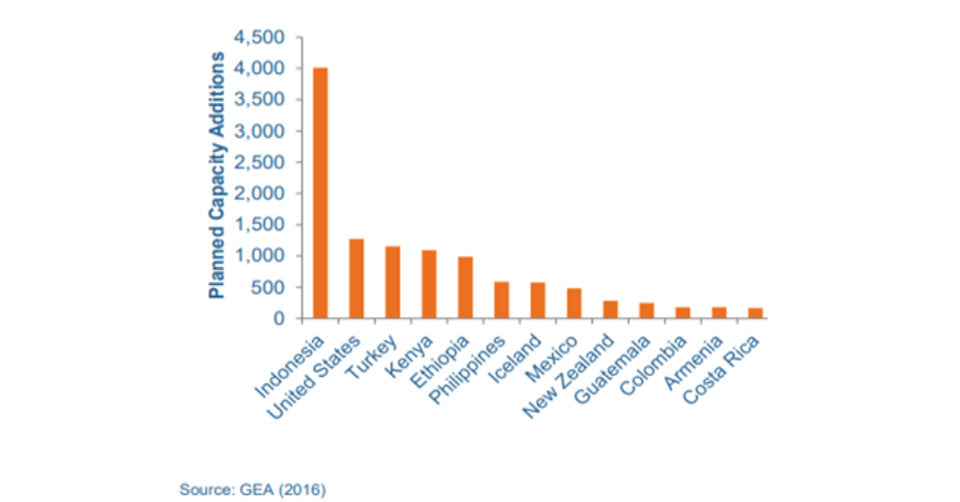Secciones GMAT ¿en qué consisten?

Anteriormente te comentábamos a rasgos generales qué contiene cada sección del GMAT y cómo se evalúa. En esta entrada, te presentaremos ejemplos de los tipos de secciones GMAT y los problemas que te pueden venir en cada una de ellas.
Secciones GMAT: AWA
En este apartado se te presentará un argumento como el siguiente:The following appeared in a memorandum written by the department of marketing to the CEO of Kell Inc. “Nowadays, all the television and radio advertising is becoming obsolete, as the new generations have stopped to use those gadgets and have started to look in the web for all the information they need. Moreover, social media has begun a revolution in the way advertising is manufactured. Long TV and radio ads are no longer effective. Thus, we must look for newer and more attractive ways to make our ads, and stop to publishing them on TV and the radio”Discuss how well reasoned you find this argument. In your discussion, be sure to analyze the line of reasoning and the use of evidence in the argument. For example, you may need to consider what questionable assumptions underline the thinking and what alternative explanations or counterexamples might weaken the conclusion. You can also discuss what sort of evidence would strengthen or refute the argument, what changes in the argument would make it more logically sounds, and what, if anything, would help you better evaluate its conclusions. La mayoría de los AWA, si no es que todos, tendrán la instrucción del párrafo anterior. Tu trabajo no es decir únicamente si está bien o mal y por qué. De hecho, el conocimiento que tengas sobre el tema no debería influir en tu respuesta. Debes analizar solo el argumento proporcionado, qué premisas son adecuadas y cuáles no están del todo bien. Cuáles podrían ser falacias, y qué información adicional requerirías para asegurar que el argumento es válido. Tienes media hora para hacer lo anterior, que es tiempo adecuado. Recuerda demostrar un vocabulario extenso, hilar las oraciones, usar conectores y, sobre todo, sintetizar y analizar información correctamente.
Secciones GMAT: Integrated Reasoning
Integrated reasoning tiene cuatro tipos de preguntas bien definidas, cada una con sus particularidades.
Two-part analysis:
Se te presentará un texto con partes cuantitativas y verbales, de mediano tamaño, y luego vendrá una tabla con 3 columnas. Tendrás que contestar dos preguntas. En la primera columna seleccionarás la tabla con la respuesta que correspondería a la primera pregunta; de igual forma harás con la segunda columna. En la tercera encontrarás las respuestas posibles. Las dos tareas podrían ser dependientes o independientes. Por ejemplo:Of the 2,400 flights leaving Mexico City each day, 1,100 are long-haul flights and 1,500 are flights to national destinations. At least 1 of the flights is neither a long-haul flight nor a national flight. In the first column, select the minimum number of flights that are either national or long-haul flights. In the second column, select the maximum number of flights that are national or long-haul flights. Make exactly one choice in each column.
| Minimum | Maximum | Number |
| 140 | ||
| 141 | ||
| 350 | ||
| 1,200 | ||
| 2,360 |
Este será el tipo más sencillo de preguntas de Integrated Reasoning. Para tener el punto, deberás contestar las dos columnas correctamente.
Table Analysis.
Como si fueras un maestro del Excel, esto es muy parecido a trabajar con tablas en este programa. Aparecerá una tabla con información variada relacionada con algún tema en específico. Después, aparecerán 3 enunciados. Tu tarea es analizar si los enunciados son verdaderos o son falsos de acuerdo a la información mostrada. La mayor parte del tiempo, estas aseveraciones se enfocarán en medidas estadísticas, especialmente la correlación y la media. Además, podrán ser del tipo “20% de los que cumplen X también cumplen Y”.
Por ejemplo:
HARVARD 1st round applications extract
| #Application | GMAT Score | Interview evaluation | Essay review | TOEFL Score | GPA | Admission |
| 1004 | 360 | 2 | 10 | 74 | 3.9 | No |
| 1005 | 570 | 3 | 7 | 85 | 3 | No |
| 1006 | 610 | 3 | 7 | 69 | 3.5 | No |
| 1007 | 640 | 3 | 3 | 119 | 3.6 | No |
| 1008 | 656 | 3 | 4 | 56 | 3.5 | No |
| 1009 | 689 | 4 | 2 | 89 | 3.8 | No |
| 1010 | 699 | 5 | 4 | 80 | 3.9 | No |
| 1011 | 715 | 6 | 7 | 110 | 4.0 | Yes |
| 1012 | 730 | 6 | 8 | 105 | 4.0 | Yes |
| 1013 | 730 | 8 | 10 | 112 | 3.2 | No |
| 1014 | 756 | 8 | 10 | 100 | 3.7 | Yes |
| 1015 | 780 | 9 | 3 | 99 | 3.9 | No |
| 1016 | 789 | 9 | 7 | 115 | 4.0 | Yes |
| 1017 | 793 | 9 | 6 | 119 | 4.0 | Yes |
For each of the following statements, select True if the statement can be verified as true based on the information in the table. Otherwise, select False.
- Having a GPA of 4.0 guarantees entrance to Harvard.
- On the admission lists, only the students who score 6 on their essay review and interview evaluation got accepted to Harvard.
- There is a positive correlation between the GMAT and the TOEFL score.
Una de las ventajas de las tablas en table analysis es que estas pueden ser ordenadas por columnas de menor a mayor, según convenga para el análisis. Esta estrategia es muy útil, y de ella se hablará en entradas posteriores.
Graphic Analysis.
En análisis gráfico te vendrá un diagrama que representa un tema específico y puede ser incluso en tercera dimensión. El diagrama puede incluir análisis de información verbal o cuantitativa. Además, viene acompañado de información adicional, clave para contestar las preguntas. Las respuestas son enunciados con espacios en blanco, para los cuales tendrás opciones para llenar cada uno. Pueden ser de 2 a 3 incisos en esta pregunta. Por ejemplo.

Use the drop-down menus to complete each statement according to the information presented in the diagram.
- Among the countries, ________ of them account for less than 9% of the total planned capacity addition.
[Menu: three, five, six, seven, eight]
- ____________ together roughly represents 10% of the total planned capacity addition.
[Menu: Kenya and Indonesia; Mexico and Colombia; Ethiopia and Kenya; Philippines and Iceland; Turkey and United States]
El objetivo es más relacionado con “data analysis” más que “data interpretation”, ya que no debes únicamente comprender la información que te presenta el gráfico, sino inferir distintos escenarios de la misma.
Multisource Analysis:
Deberás analizar e interpretar dos o tres fuentes de información distintas y responder de dos a tres preguntas (cada una con sus correspondientes 2 o 3 incisos). Estas preguntas serán, la mayoría de las veces, de verdadero y falso; y una será de opción múltiple. Tab 1. Email from portfolio manager:Dear investor, here are the results on your last year investment. The return is the average daily change of the price of the stock during a year, and the risk is the standard deviation of those changes (consider a normal distribution of the returns).
| Stock | Industry | Risk | Return | Amount invested |
| AAD | Construction | 3.5% | 6% | 24M |
| DAW | Retailer | 9% | 4% | 15M |
| PRZ | Food | 15% | 9% | 21M |
Due to the present economic situation, I’d strongly recommend moving your position to riskier assets, as stability is foreseen in the near future. You can try considering new and developing industries. Your benchmark, which was the National Price Index, was beaten by 1%. I’d expect a reinvestment of at least 50% of your earnings.Remainder: Stocks are expected to have a better return next year, about 1% more. However, risk is expected to increase as well 1%. TAB 2.Email from investor:I noticed that I’m receiving 1 percentual point less than the chart implies. I remember your commission was 0.5% of the total investment.About your comments, even if I’d like to take riskier assets, I can’t afford more than 7% of risk. I am willing to reinvest 50% of my real earnings (please include the 0.5%), and the maximum amount possible in the riskiest asset of today’s portfolio, with the condition I’m establishing. Please, invest the rest in the stock with the least variations. The rest of the portfolio remains as it is.Next year inflation is expected to be around 7%. Are you able to beat that?TAB 3.The return of all the portfolio is calculated by adding up the products of the proportion invested in one asset times its return. The variance of the portfolio is calculated by multiplying the proportion of an asset times its risk, squaring the multiplication, and adding up the results. Consider there is no correlation between the assets.Las preguntas pueden ser verbales como la siguiente:From the emails shown, it can be inferred the following attitudes and attributes of the investor, EXCEPT
- Risk-averse
- Not shy to denounce contract insufficiencies
- Trust on the economic system
- Aimed to preserving the value of his/her money
- Conservative in terms of investment choices
O pueden ser cuantitativas:Is this sentence true?
- With the market expectations and the investor limitations, the manager won’t be able to beat the benchmark next year.
En multisource analysis lo más importante es que recuerdes que las 2 o 3 preguntas que te aparecen serán relacionadas, por lo que debes fijarte muy bien en los detalles. Te llevará tiempo, por lo que debes administrarlo adecuadamente. Recuerda, al igual que en las demás secciones del examen, no puedes regresarte a revisar. Una pequeña ventaja, en Integrated Reasoning podrás hacer uso de una calculadora simple (tiene operaciones aritmética hasta la raíz cuadrada), pero utilízala sabiamente: en ocasiones en vez de ayudarte, te perjudican y te quitan tiempo.
Secciones GMAT: Verbal
Para poner a prueba tu dominio del inglés, las preguntas de esta sección serán muy relacionadas con tu comprensión del idioma, tu habilidad de razonamiento crítico y aptitudes gramaticales. Te aparecerán tres tipos de pregunta principales, que a continuación describiremos.
Reading Comprehension:
El pasaje podrá ser largo o corto, y te aparecerán de 2 a 4 preguntas del mismo. ¿Qué tan rápido eres leyendo? ¿Hasta qué punto eres capaz de obtener información precisa de los textos? No solo te servirá esto en el examen, sino en tu posgrado. Esta sección no sólo evalúa el dominio del idioma inglés, sino más bien tu comprensión lectora y capacidad lógica. Ten en cuenta que para la mayoría de quienes presentan el GMAT en el mundo, el inglés es su primera lengua. Esta sección sería cómo si a ti te pusieran un examen de comprensión lectora en español. Obviamente es pre requisito entender bien el idioma. Sin embargo, el hablar y entender bien el español no es garantía de un buen puntaje.
Para obtener un puntaje competitivo en la sección verbal, y en específico en la sección de comprensión lectora necesitas estrategias puntuales de manejo de tiempo y lógica.
Veamos el siguiente ejemplo tomado de: Official Guide Revised GRE (2016) : Was Felix Mendelssohn (1809–1847) a great composer? On its face, the question seems absurd. One of the most gifted prodigies in the history of music, he produced his first masterpiece at sixteen. From then on, he was recognized as an artist of preternatural abilities, not only as a composer but also as a pianist and conductor. But Mendelssohn’s enduring popularity has often been at odds—sometimes quite sharply—with his critical standing. Despite general acknowledgment of his genius, there has been a noticeable reluctance to rank him with, say, Schumann or Brahms. As Haggin put it, Mendelssohn, as a composer, was a “minor master . . . working on a small scale of emotion and texture.”The passage suggests that anyone attempting to evaluate Mendelssohn’s career must confront which of the following dichotomies?
- The tension between Mendelssohn’s career as a composer as a composer and his career as a pianist and conductor.
- The contrast between Mendelssohn’s popularity and that of Schumann and Brahms
- The discrepancy between Mendelssohn’s popularity and his standing among critics
- The inconsistency between Mendelssohn’s reputation during his lifetime and his reputation since his death
- The gap between Mendelssohn’s prodigious musical beginnings and his decline in later years.
En la pregunta anterior, no solo debes leer, sino razonar qué hay detrás del texto. Analizar actitudes del autor, posibles objetivos, qué quiere dar a conocer, entre otras preguntas, serán el tipo de problemas de reading comprehension. Además, lo importante es leer bien. Dado que de un pasaje se hacen varias preguntas, intenta interiorizar lo que quiere decir el pasaje para poder responder correctamente, y no cometer errores al hacer scanning o skimming. En general tendrás poco tiempo para responder cada pregunta. Por lo que las estrategias específicas de manejo de tiempo son cruciales para ser exitoso en esta sección.
Critical Reasoning:
Este tipo de preguntas más que relacionarse con comprensión del texto, tienen un vínculo con tu capacidad de argumentación, de identificar premisas y conclusiones en un argumento, y de evaluar qué tipo de información debilitaría o fortalecería el argumento. En pocas palabras, como dice el nombre de la sección, pondrá a prueba tu razonamiento crítico, habilidad esencial para tu MBA. Un ejemplo es el siguiente, tomado de Official Guide for GMAT Verbal Review:High levels of fertilizer and pesticides, needed when farmers try to produce high yields of the same crop year after year, pollute water supplies. Experts therefore urge farmers to diversify their crops and to rotate their plantings yearly.To receive governmental price-support benefits for a crop, farmers must have produced that same crop for the past several years.The statements above, if true, best support which of the following conclusions?
- The rules for governmental support of farm prices work against efforts to reduce water pollution
- The only solution to the problem of water pollution from fertilizers and pesticides is to take farmland out of production.
- Farmers can continue to make a profit by rotating diverse crops, thus reducing costs for chemicals, but not by planting the same crop each year.
- New farming techniques will be developed to make it possible to farmers to reduce the application of fertilizers and pesticides.
- Governmental price supports for farm products are set at levels that are not high enough to allow farmers to get out of debt.
Como verás, el texto es más pequeño que en comprensión lectora, no obstante, tiene información muy específica para poder sacar conclusiones. Este ejemplo es del tipo “silogismo”, es decir, a raíz de dos premisas, obtener una conclusión.
En este tipo de preguntas, encontrarás 8 categorías:
- Identificar el enunciado que debilita el argumento.
- Reconocer la aseveración que fortalece el argumento.
- Encontrar la premisa faltante para una conclusión.
- Obtener la conclusión a raíz de dos premisas.
- Establecer la función de algún enunciado.
- Determinar qué argumento hace síntesis de otros dos que parecen contradictorios.
- Identificar qué opción complementa mejor al argumento dado.
- Saber qué oración de las opciones puede llenar un espacio en blanco que aparecerá en el pasaje.
En todo caso, estas preguntas van más dirigidas a la inferencia y no a la descripción, como puede ser el caso de comprensión lectora.
Sentence correction.
Esta parte, característica del GMAT, se enfocará en tu habilidad gramatical. Vendrá un texto, destacando una oración, aparentemente bien estructurada, pero tal vez con algún error. Tu tarea será escoger, de entre las opciones, el enunciado con la gramática correcta. Este enunciado no sólo debe estar bien escrito sino tener lógica, y mantener la intención correcta. El enunciado original siempre aparecerá en las opciones, ya que hay ocasiones en que la oración estaba bien estructurada.Already anxious after watching a horror movie, Michele mistook *the sound of a backfiring car as the blast of a gunshot*
- The sound of a backfiring car as the blast of a gunshot
- A car as it was backfiring for the blast of a gunshot
- The sound of a backfiring car for the blast of a gunshot
- A car as it was backfiring as the blast of a gunshot
- A backfiring car as the blast of a gunshot
Secciones GMAT: Cuantitativa
En la sección cuantitativa del GMAT existe dos tipos de preguntas. Problem Solving and Data Sufficiency. Ambos tipos de preguntas requieren dominio de temas de aritmética, álgebra elemental, y conceptos básicos (nivel preparatoria) de geometría. Además, requerirás conocimientos de estadística, lectura de gráficos, y algunos temas de combinatoria y probabilidad. La dificultad de las preguntas no es porque miden conceptos matemáticos muy difíciles, sino porque requieren razonamiento cuantitativo avanzado. Utilizan las matemáticas para medir tu nivel analítico y lógico. La base detrás de estos problemas es que puedas utilizar pocos datos y temas sencillos para resolver preguntas de gran complejidad y, sobre todo, ingenio. Son más los problemas que tienen truco que los que no. Además, el test-maker te pondrá trampas en las opciones de respuesta. Es allí donde tu razonamiento crítico tiene que entrar en juego. No puedes utilizar calculadora para responder las preguntas de esta sección.
Problem Solving
Este tipo de problemas miden tu habilidad para utilizar la lógica y el razonamiento analítico para resolver problemas cuantitativos. El problema presenta cinco opciones de respuesta múltiple. Tú deberás elegir la respuesta correcta entre éstas opciones.
Ejemplo
Directions Solve the problem and indicate the best of the answer choices given. Question Given that 6n >3600, what is the greatest possible integer value of n? (A) 2 (B) 3 (C) 4 (D) 5 (E) Answer: (C)
Data Sufficiency
Los tipos de problema de data sufficiency miden tu habilidad de analizar problemas cuantitativos, reconocer qué información es relevante, y determinar hasta qué punto tienes suficiente información para resolver un problema. El examen te dará un problema que consiste de una pregunta y dos declaraciones. Utilizando la información en las declaraciones, junto con tu conocimiento de matemáticas y de sentido común, debes decidir cuál de las opciones te da la suficiente información para responder la pregunta. Más que nada, la habilidad que debes poner a prueba es demostrar porqué cierta información te sirve para resolver el problema, y porqué otra no. Ojo: no es necesario que resuelves el problema, entonces no pierdas tiempo en ello.
El siguiente es un ejemplo tomado de la página oficial de GMAC:
Las siguientes instrucciones son iguales para todos los tipos de problemas de Data Sufficiency This data sufficiency problem consists of a question and two statements, labeled (1) and (2), in which certain data are given. You have to decide whether the data given in the statements are sufficient for answering the question. Using the data given in the statements, plus your knowledge of mathematics and everyday facts (such as the number of days in July or the meaning of the word counterclockwise), you must indicate whether:
- Statement (1) ALONE is sufficient, but statement (2) alone is not sufficient to answer the question asked.
- Statement (2) ALONE is sufficient, but statement (1) alone is not sufficient to answer the question asked.
- BOTH statements (1) and (2) TOGETHER are sufficient to answer the question asked, but NEITHER statement ALONE is sufficient to answer the question asked.
- EACH statement ALONE is sufficient to answer the question asked.
- Statements (1) and (2) TOGETHER are NOT sufficient to answer the question asked, and additional data specific to the problem are needed.
QuestionIn right triangle ABC, AB is its hypotenuse, point X is the midpoint of the hypotenuse, point Y is the midpoint of the leg AC. If R is the midpoint of XA and S is the midpoint of YC, what is the area of triangular region ARS?(1) The area of triangular region ACX is 3(2) The length of BC is 3(A) Statement (1) ALONE is sufficient, but statement (2) alone is not sufficient. (B) Statement (2) ALONE is sufficient, but statement (1) alone is not sufficient. (C) BOTH statements TOGETHER are sufficient, but NEITHER statement ALONE is sufficient. (D) EACH statement ALONE is sufficient. (E) Statements (1) and (2) TOGETHER are NOT sufficient.Respuesta: (A) Aproximadamente, vendrá una pregunta de data sufficiency por cada 2 de problem solving. Por ello, tienes que prepararte muy bien esta área. A nivel general, el área cuantitativa del GMAT es complicada, más retadora que en el GRE, y data sufficiency es la que le otorga esta sensación. Si quieres adquirir las habilidades verbales, cuantitativas, de escritura y de razonamiento en general para el GMAT, necesitas asesorarte con expertos, y, sobre todo, con una metodología que tome tu contexto como hispanoparlantes. Scholastica es tu aliado ideal. Por sus años de experiencia y sus casos de éxito, diseñaremos contigo un plan de estudio efectivo para que puedas destacar en el examen y aprovechar tu tiempo de estudio correctamente.
- Etiquetas: Estudiar en el extranjero | GMAT |
 Acceso a alumnos
Acceso a alumnos








